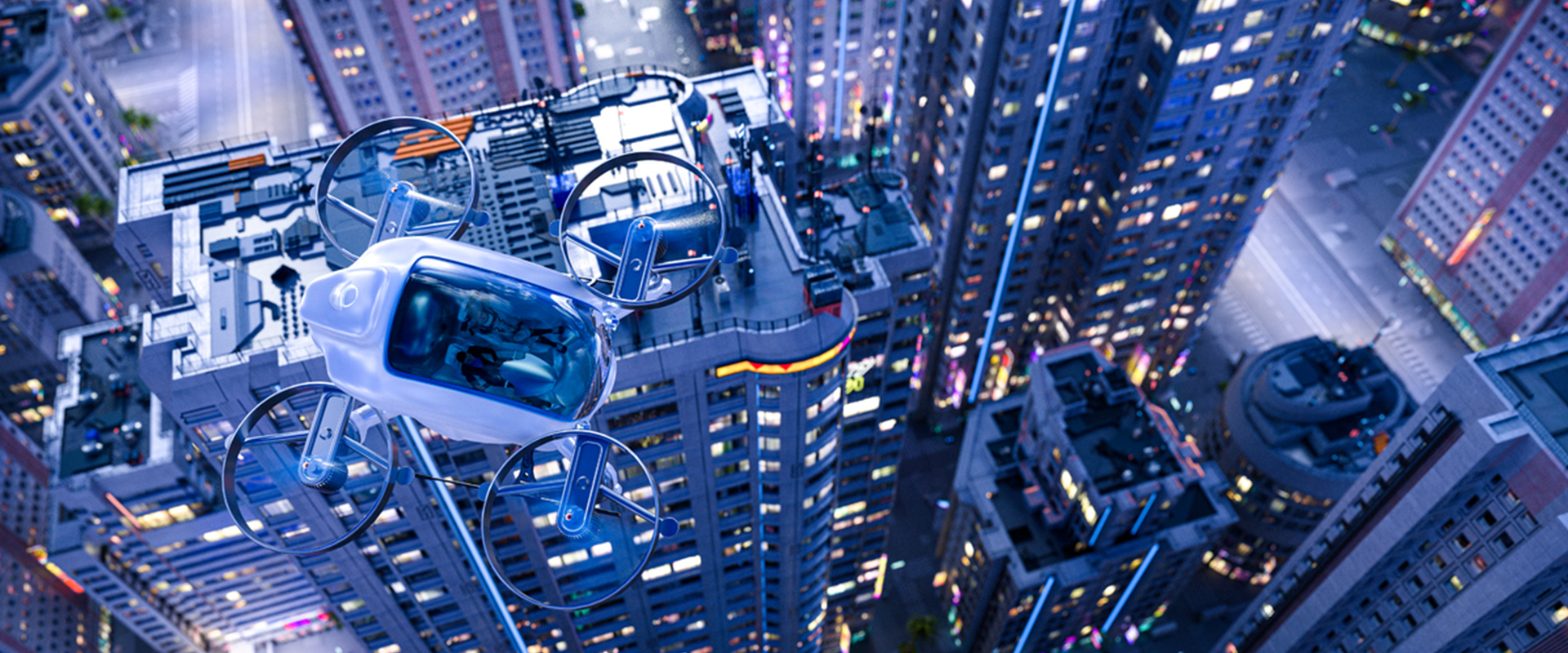We often wonder whether what’s happening in science fiction movies can happen in reality. But, for many of these groundbreaking innovations, the future is already here.
Table of Contents
- I, Robot (2004): Autonomous cars
- Ex Machina (2014): Realistic AI
- Ready Player One (2018): Avatars
- Iron Man 3 (2013): Nanotechnology
- Her (2013): Intelligent OS
- No Time to Die (2021): Smart watches
- Blade Runner 2049 (2017): 3D Printed Replicas
- Big Hero 6 (2014): Healthcare robots
- Wall-E (2008): Trash bots
- The Fifth Element (1997): Drones
Science fiction has a long history of inspiring the technology we have today. Things such as mobile phones and sliding doors were first envisioned in Star Trek, and the internet search engine was initially dreamed up in Douglas Adams’ Hitchhiker’s Guide to the Galaxy.
Sci-fi movies such as Ex Machina and Annihilation by Alex Garland, or Blade Runner and its sequel Blade Runner 2049 as well as inspired by the dystopian sequel Mute offer captivating glimpses into alternate realities. And who can forget Steven Spielberg’s virtual reality-themed masterpiece, Ready Player One? As we immerse ourselves in these sci-fi wonders, a question arises: which fictional technologies will eventually transcend the screen and become a reality? Some already have.
Have a look at our top 10 list of sci-fi technologies that have become a reality.
I, Robot (2004): Autonomous cars
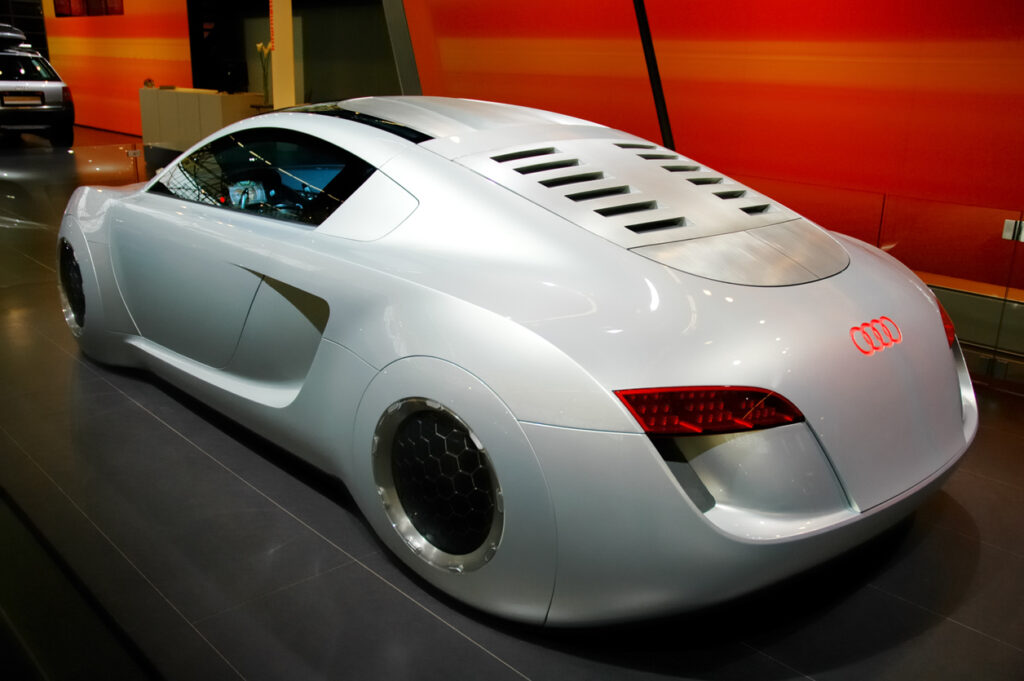
- Name: Audi RSQ
- Creator: Audi AG
- Function: autonomous driving ( predicting traffic patterns, automatically adjusting route, driving and parking itself)
Today’s equivalent:
- Name: Autopilot
- Creator: Tesla
- Function: Autopilot – driving assisting tool
Do you think that autonomous cars on our roads are not present yet? The concept developed by Audi AG is close to ‘driving away’ from the movie as a lot of cars are equipped with sensors that help with parking or even prevent accidents. With a highly advanced navigation system, self-driving cars can be potentially safer than human-driven vehicles since they react swiftly to changing traffic conditions and impediments. One brand that has designed cars with advanced sensor coverage is Tesla.
Source: tesla.com/autopilot
Ex Machina (2014): Realistic AI
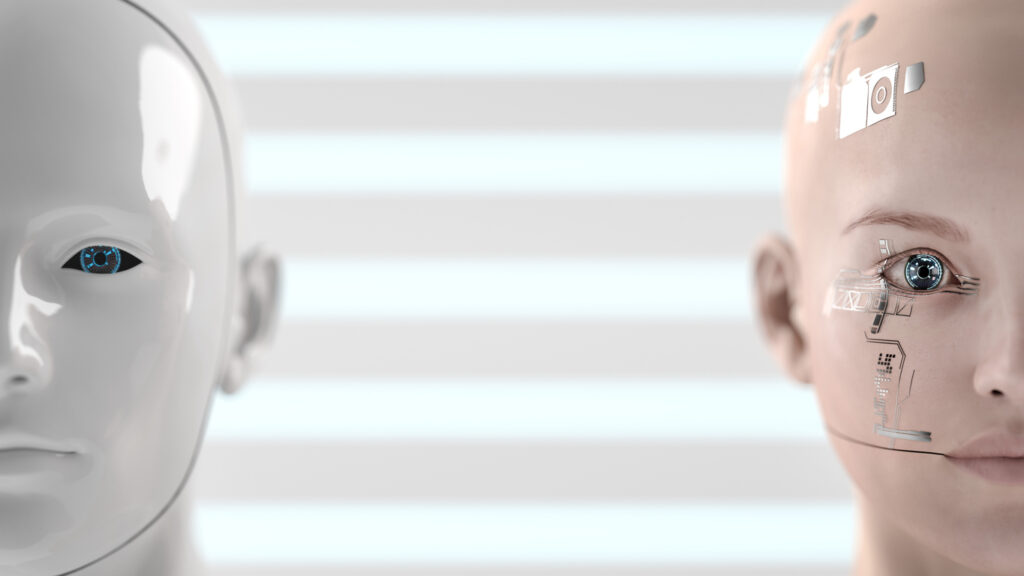
- Name: Ava
- Creator: Double Negative / Milk VFX (in the movie by Nathan Bateman)
- Function: A highly intelligent gynoid
Today’s equivalent:
- Name: Collaborative robots
- Creator: Automation and robotics engineers
- Function: Assisting humans in everyday tasks
While numerous humanoid robots remain in the prototype phase or early stages of development, a select few have emerged from research and development in recent years, venturing into the real world as bartenders, concierges, deep-sea divers, and companions for older adults. Also, popular in the fifth industrial revolutions are so-called collaborative robots or “cobots” which contribute to warehouses and factories, assisting humans in logistics and manufacturing tasks. Additionally, there are robots that primarily offer novelty and awe, conducting orchestras and welcoming guests at conferences.
While many Big Tech companies are actively working to enhance technology, following a similar trajectory as depicted in Ex Machina, we should hope that these advancements do not yield the same outcomes as portrayed in the movie’s ending, where AI turns against its creator.
Ready Player One (2018): Avatars
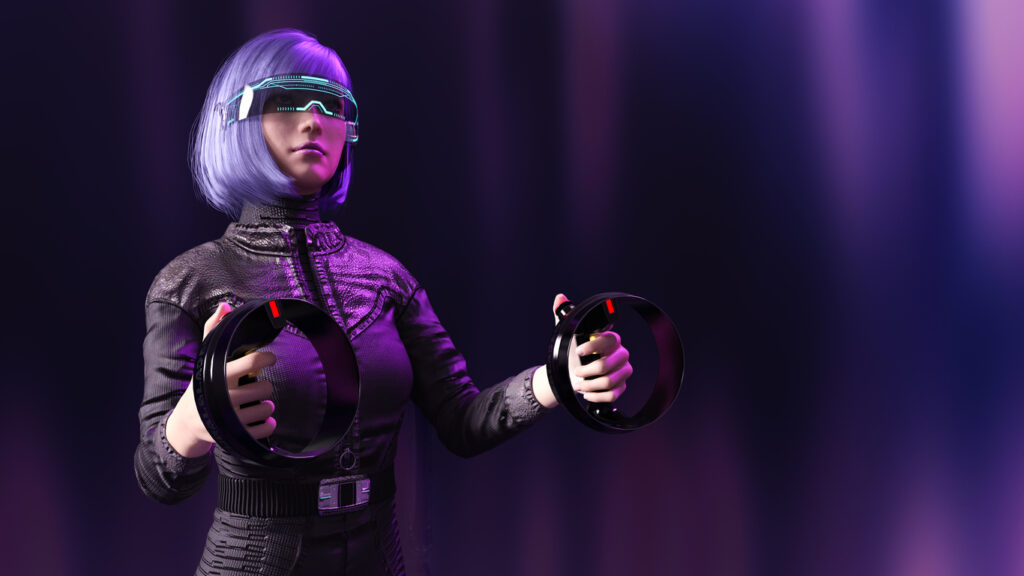
- Name: OASIS
- Creator: James Halliday and Ogden Morrow of Gregarious Games
- Function: Enters the virtual world using a VR glasses to control and animate the avatar body
Today’s equivalent:
- Name: Personal Artificial Intelligence
- Creator: ObeN
- Function: Realistic avatar that talks and behaves like its human counterpart
Going into any science fiction world physically is not possible for humans yet. But, thanks to the advent of augmented and virtual realities, the possibility of immersing oneself in virtual worlds using the sense of sight has become attainable, particularly within the realms of gaming, online communities, and simulations. Already now, we can enter virtual worlds wearing VR glasses.
Avatars have already become an integral part of our everyday experiences, allowing us to express emotions when communicating with others through messaging communicators and platforms, or as personalised representations in games. An example is seen in the Ready Player One movie – wearing VR glasses enable the gamer to immerse themselves into the virtual world by adapting the control of an avatar/ character. Many companies, like ObeN or NVIDIA, already enable creation of avatars on their platforms that look and sound like their human counterparts.
In the future, we can expect growth of Meta as the idea speaks to Mark Zuckerberg who wants to create a metaverse (virtual environment) with hyper-realistic 3D avatars, rendering human characteristics and movements. It will happen with the use of artificial intelligence (AI), advanced modelling techniques, and electromyography.
Source: tech.facebook.com / oben.me / nvidianews.nvidia.com
Iron Man 3 (2013): Nanotechnology
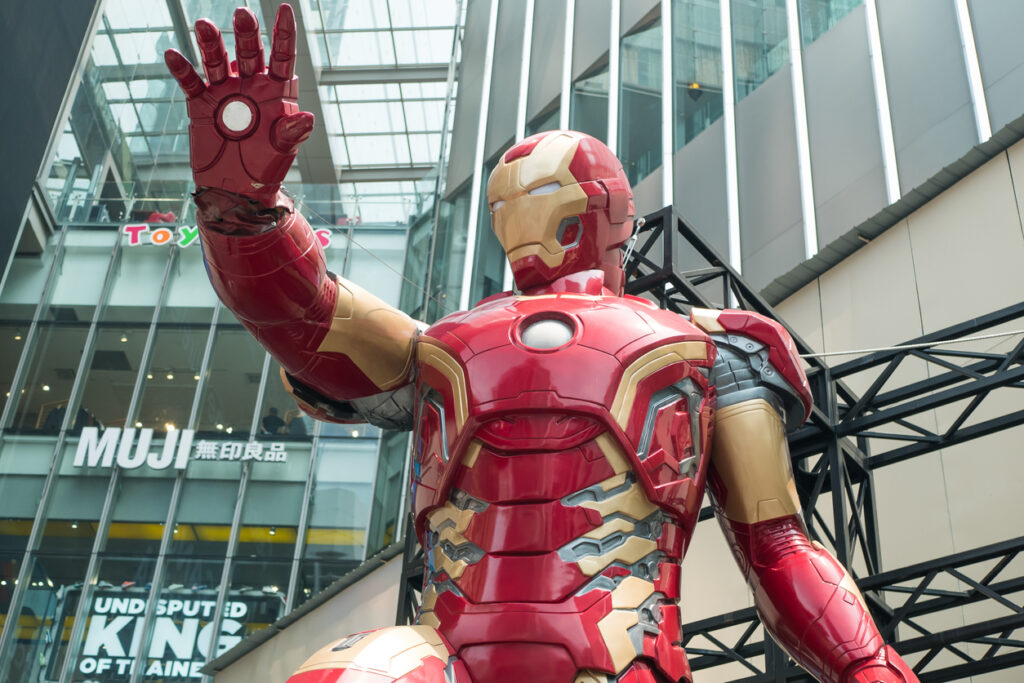
- Name: NanoTech Suit – Mark L
- Creator: Weta Digital (in the movie Tony Stark)
- Function: Protection and regeneration, defence an attack as well as shape shifting on the Iron Man’s body
Today’s equivalent:
- Name: Nanotechnology
- Creator: Richard Feynman
- Function: used for various applications in scientific fields, including chemistry, biology, physics, materials science, and engineering
The Iron Man‘s suit is composed of millions of tiny nanobots or nanoparticles that can assemble and disassemble themselves. The nanobots allow the suit to be stored in a compact form, such as within Tony Stark’s Arc Reactor or wrist device. When needed, the nanoparticles can rapidly deploy and envelop Stark’s body, transforming into the Iron Man Armor. Besides shape shifting, enhanced protection, regeneration and repair, nanotechnology enables the suit to generate an array of powerful weapons, including lasers and energy blades.
Today, such a suit is still only in the Marvel Universe. However, nanotech is developing fast and is already used in various applications, including medicine, electronics, engineering (among 3D printing and clean energy), and materials science.
Her (2013): Intelligent OS

Credit: Flickr (CC BY-SA 2.0)
- Name: Samantha
- Creator: OS1
- Function: Intelligent computer operating system
Today’s equivalent:
- Name: Siri/ Alexa
- Creator: Apple/ Amazon
- Function: Voice activated personal assistant
Apple, Microsoft and Google have made huge strides in their lines of voice-activated personal assistants. These machines have the ability to learn our likes, dislikes and behavioural patterns in order to deliver a personalised service. But for now they lack the emotional intelligence and conversational skills of Scarlett Johansson’s character. Which is probably for the best.
Source: apple.com
No Time to Die (2021): Smart watches

- Name: Spy watch
- Creator: Omega
- Function: Remote control, explosive detonator, laser, electromagnetic pulse (EMP), grappling hook
Today’s equivalent:
- Name: Smartwatches
- Creator: Apple
- Function: Health monitoring, integrated communication, GPS and navigation, remote control, biometric authentication
James Bond’s watch, often depicted as a multifunctional gadget in the movies, has inspired real-world advancements in wearable technology. While the exact capabilities of Bond’s watch may still be fiction, like used in No Time to Die lasers, explosive detonators and EMP, certain features and functionalities, some of the described below have been incorporated into modern smartwatches.
Devices such as smartwatches and fitness trackers have become popular for monitoring health and staying connected. Apple smart watches enable health and fitness insights (including high and low heart rate notification, steps and calories count, temperature sensing, ECG and blood oxygen apps, etc.), biometric authentication (Face ID), GPS and navigation, emergency SOS, fall and crash detection.
Blade Runner 2049 (2017): 3D Printed Replicas

- Name: Replicants (fictional bioengineered humanoids)
- Creator: Denis Villeneuve, Roger Deakins and Hampton Fancher (in the movie Tayler Corporation and Wallace Corporation)
- Function: AI systems with advanced bioengineered bodies are designed to replicate human physical and mental capabilities
Today’s equivalent:
- Name: 3D printed replica
- Creator: Organovo
- Function: 3D printing human tissue
In Blade Runner 2049, 3D printing is depicted as a prominent manufacturing method used to create synthetic humans known as replicants. They look like regular people, but they’re genetically engineered and created artificially. Today, we cannot replace or replicate a human yet but we can create a 3D-bioprinted human tissue. A company called Organovo has made significant advancements in 3D printing human tissue, including creating functional three-dimensional models of organs for research, drug testing, and medical purposes.
Thanks to 3D printing designers can repeat objects and forms. It is possible to work on these forms and adjust them to specific needs. For instance, in rapid prototyping and manufacturing, 3D printing enables the creation of highly customised products that can be visualised, tested and tailored to individual preferences. Industries, such as healthcare, aerospace, and automotive are utilising additive manufacturing to produce personalised medical implants, aircraft components, and car parts.
Find out more by reading about digital twin in health sector.
Source: organovo.com
Big Hero 6 (2014): Healthcare robots
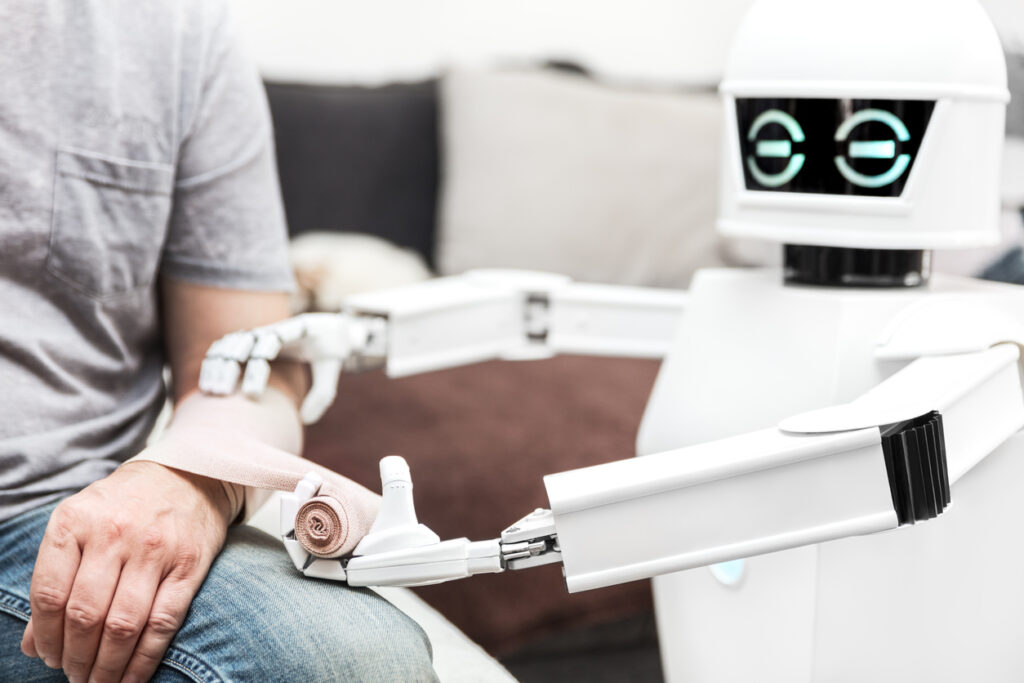
- Name: Baymax
- Creator: Steven T. Seagle and Duncan Rouleau
- Function: Detecting vital stats, given a patient’s level of health and level of pain
Today’s equivalent:
- Name: Robear
- Creator: Scientists from RIKEN and Sumitomo Riko Company Limited
- Function: Medical robot assistant (assisting with patient transfers, such as lifting from a bed to a wheelchair or aiding those who can stand but need support)
If you haven’t seen Big Hero 6, it is a movie showing a life with a robotic healthcare companion and primary caregiver – Baymax. The robotic carer’s role is to provide medical assistance, support, and companionship to those in need. Today, healthcare robots care about patients and help them receive suggested diagnoses, drugs, and treatment plans based on a patient’s specific medical records, history, and present symptoms. If you want to find out more about robotic medical assistants and related technologies read our article on 10 healthcare technology trends.
Source: technologyreview.com
Wall-E (2008): Trash bots

- Name: Wall-E
- Creator: Buy-N-Large
- Function: To compress trash into small cubes
Today’s equivalent:
- Name: Robot-based Autonomous Refuse (ROAR)
- Creator: Volvo
- Function: To empty bins into a bin lorry
Automated robots have been around for almost a century now, especially common now in Industry 4.0, where they help humans with automated tasks through a cyber-physical human intelligence system. With the fifth industrial revolution, we’re entering a phase where humans and robots can cooperate and work together. However, automation is still all about taking the tedious, mundane tasks out of our lives. And what can be more tedious than emptying the bins?
Volvo, in collaboration with Chalmers University of Technology, Mälardalen University, Penn State University, and recycling company Renova, have created ROAR. It uses a drone to scan the area and select certain bins. It then deploys a robot to empty each bin into the back of the lorry truck. The technology is practical but looks nowhere as cute as Wall-E.
Source: volvogroup.com / citylab.com
The Fifth Element (1997): Drones

- Name: Flying taxis
- Creator: Jean-Claude Mézières
- Function: Flying taxis and police cars used for commuting and service
Today’s equivalent:
- Name: Unmanned aerial vehicle (UAV)
- Creator: Abraham E. Karem
- Function: A self-flying drone without human pilot on board
Who among us hasn’t dreamt of flying cars? While we may not have reached that level of technological advancement just yet, drones offer a glimmer of hope. Although the technology is still evolving, companies like Uber are already contemplating the development of a flying taxi system. In the present, we have unmanned aerial vehicles (UAVs), reminiscent of the concepts portrayed in The Fifth Element, which have become increasingly popular for aerial photography, surveillance, and delivery services.
Source: uber.com
Science fiction, both in books and on screen, has a knack for predicting tomorrow’s tech. And while today’s robots don’t quite experience empathy like Samantha or emotion like Wall-E, thanks to fiction, it’s not hard to imagine a future where they do.





